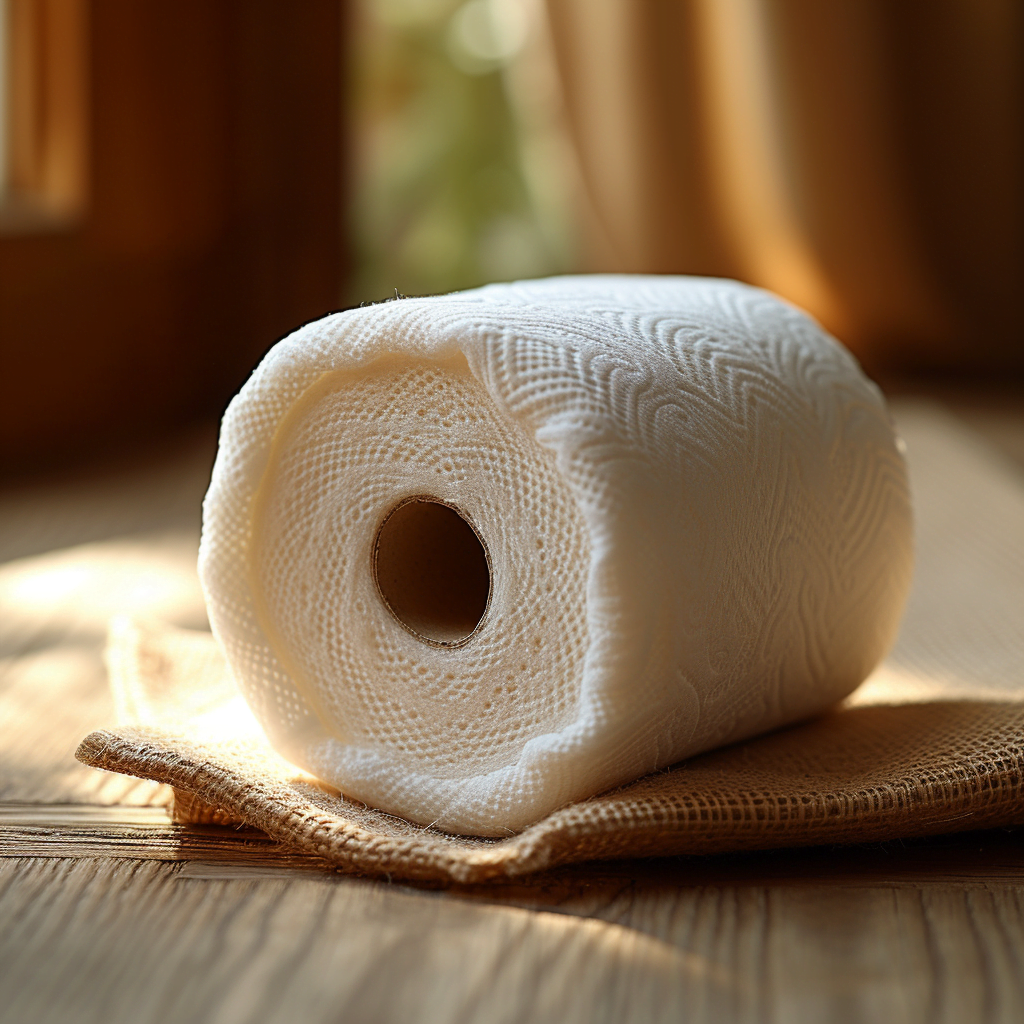Key points
• Biodegradable Properties: Septic safe toilet paper is designed to break down quickly and completely in a septic system, preventing clogs and maintaining the system’s proper functioning.
• Chemical-Free Composition: This type of toilet paper is typically free from harsh chemicals, dyes, and fragrances that can disrupt the delicate balance of bacteria within the septic tank, essential for waste decomposition.
• Approved by Certifying Bodies: Septic safe toilet paper often comes with certifications or endorsements from relevant authorities, such as the National Sanitation Foundation (NSF), ensuring it has passed rigorous testing for septic safety.
Contents
- 1 Key points
- 2 Importance of Choosing Septic Safe Toilet Paper
- 3 Overview of Septic Systems and Paper Disintegration
- 4 The Role of Toilet Paper in Septic System Health
- 5 Factors Affecting Toilet Paper’s Septic Safety
- 6 Rapid Dissolvability
- 7 Biodegradable Materials
- 8 Absence of Chemicals and Additives
- 9 Ply and Thickness Considerations
- 10 Brands We Recommend:
- 11 Benefits of Bidets for Septic Systems (Alternative Option)
- 12 Toilet Paper Types to Avoid
- 13 Frequently Asked Questions (FAQ)
Importance of Choosing Septic Safe Toilet Paper

We cannot stress enough how paramount it is to select the right toilet paper. That’s because everything flushed down your plumbing should break down efficiently and seamlessly mingle with your septic tank’s ecosystem. Opt for the wrong kind, and you’re looking at potential blockages or even worse, costly repairs that’ll have you wishing you’d paid attention to that label that claimed ‘septic safe’.
Overview of Septic Systems and Paper Disintegration
An accessible insight into septic systems lays a sturdy foundation for understanding this matter. At its core, these waste management ensembles rely heavily on bacteria doing their job—decomposing organic material discreetly beneath our homes. Toilet paper plays a rather significant role here; if it disintegrates properly, all’s well in the underground world.
But if it doesn’t? You’ve guessed it—it interrupts the delicate balance maintained by microorganismic activity. Hence, ensuring that your TP choice compliments rather than clashes with this process is downright non-negotiable.
A septic system is an underground wastewater treatment structure commonly found in areas without centralized sewer systems. They use a combination of nature and proven technology to treat household plumbing produced by bathrooms, kitchen drains, and laundry. A typical setup includes a septic tank and a drainfield, or soil absorption field.
The Role of Toilet Paper in Septic System Health
Toilet paper’s fate after flushing is crucial in a septic environment. It should swiftly disintegrate, allowing for easy decomposition by bacteria in the septic tank. If it doesn’t break down effortlessly, it might clog your system leading to potential backups or additional maintenance.
Factors Affecting Toilet Paper’s Septic Safety
Sundry elements influence toilet paper’s compatibility with septic systems:
- Biodegradability: Choose toilet paper that decomposes quickly.
- Thickness: Ultra-thick varieties might take longer to dissolve.
- Chemicals: Some TP may have addtives detrimental to helpful bacteria.
Bearing these factors in mind can keep your septic system healthy. Looking for something pertinacous that won’t throw a wrench in your waste management works? Go for the septic-safe TP—it’s designed to work effectively within these delicate ecosystems.
Rapid Dissolvability
When it comes to septic systems, the quicker toilet paper can dissolve, the better. Septic safe toilet tissues are designed with rapid disintegration in mind. This is crucial as it minimizes potential blockages in the septic system, ensuring a smooth operation and less maintenance headaches. These products often undergo specific tests to guarantee they’ll break down swiftly once flushed.
Biodegradable Materials
Toilet paper that’s septic safe is also typified by its biodegradability. Being made from materials that easily decompose means they’re not just kinder to your septic tank; they’re also a more eco-friendly option. Biodegradable toilet paper interacts with the natural bacterial processes in a septic system, which helps to prevent backups and maintain environmental balance.
Absence of Chemicals and Additives
One of the key characteristics of septic-safe tissue is that it’s typically free from added chemicals and fragrances. Dyes, lotions, and other chemicals commonly found in regular toilet papers can disrupt the delicate microbiome of your septic tank. By opting for a more natural alternative, you’re also sidestepping the risk of chemical build-up that could necessitate more frequent pumping or cleaning.
Ply and Thickness Considerations
The number of layers (ply) and thickness of the toilet paper play an integral role too. While thicker, multi-ply paper might seem like a luxury, it often doesn’t dissolve as quickly as its thinner counterparts. Thinner, 1 or 2-ply options might not provide quite the same level of comfort; however, their agreeableness with your plumbing can save a fair bit of hassle—and expense—in the long run.
Brands We Recommend:
Who Gives A Crap
Diving right in, Who Gives A Crap is not just a cheeky name but also a forward-thinking brand. They’re on a mission to make a serious impact—not only to your bathroom experience but also to the global sanitation crisis. Their focus ain’t merely limited to what happens in the loo; they’ve set their sights on environmental responsibility and aiding those in need.
Product Features and Septic Safety
Owning up to its seemingly brash name, this brand delivers when it comes to septic safety. Their toilet paper is 100% recycled, offering both softness and strength without clogging your pipes or messing with natural breakdown processes. It’s like they’ve thought of everything—earth-friendly, easy on your septic system, and kind enough for a guilt-free flush every time.
Reel Paper
Making waves in the eco-toilet paper scene, Reel Paper’s ethos is all about hitting two birds with one stone: providing sustainable hygiene products while mitigating deforestation. It’s a breath of fresh air to see a company that doesn’t skim on environmental aspirations while serving up some top-notch hygienic solutions.
Product Features and Septic Safety
If septic safety were an Olympic sport, Reel Paper would be going for gold. Crafted from bamboo, (which grows insanely fast by the way), this toilet paper breaks down swiftly once flushed. And let’s just say it’s super septic-friendly.
Cheeky Panda
Bursting onto the scene with spirit and sustainability at its core is Cheeky Panda. These folks are all ’bout making sure that our planet gets more love whilst you get that clean feeling when dealing with your personal business. Did someone say tree-saving bamboo? Oh yes, they did—C
Opting for a bidet is quite the savvy move, not only for personal cleanliness but also in supporting septic system health. These nifty devices spruce up your post-bathroom routine with an eco-friendly flair. When you use a bidet, it cuts down substantially on the need for toilet paper. As a result, there’s less paper to process for your septic system, which could mean fewer blockages and maintenance issues to worry about.
Benefits of Bidets for Septic Systems (Alternative Option)
Bidets offer a gentle, effective cleansing method that can significantly reduce the load on your septic tank. With less paper going down the drain, the downstream impact on your system is minimized. This translates into potentially longer periods between maintenance calls and possibly extending the life span of your entire septic setup.
Environmental and Hygienic Advantages
Beyond being kinder to your septic system, bidets are gentler on the planet as well. They diminish reliance on paper products and the associated environmental toll from processing and transportation emissions – it’s a small step with a big impact towards sustainability. Moreover, using water for cleaning can be more sanitary than paper alone, giving users a fresher feeling and potentially reducing the chances of irritation or infection.
Whisper Bidets
Whisper Bidets might not be boisterously known, but they’re making quiet waves in washroom technology. Designed for simplicity and efficiency, these models aim for unobtrusive integration into your daily routine.
Product Features and Septic Compatibility
The features of Whisper Bidets models prove that this brand understands what matters to its customers. They’re equipped with adjustable settings and straightforward installation processes making them ideal for households with varied preferences. Plus, by reducing toilet paper usage, they naturally complement homes with delicate septic systems.
Hibbent
Hibbent may not be as high-profile as some other names in the industry yet it bags kudos for merging quality with cost-effectiveness in their bidet solutions. Targeted at budget-conscious consumers who don’t want to sacrifice performance, Hibbents hits all the right notes.
Product Features and Septic Compatibility
Their products boast enviable aspects such as dual nozzles designed for front-to-back coverage catering to both sexes. Their no-frills approach ensures compatibility with most standard toilets – which means easing into use without added hassle and naturally aligning with septic-friendly hygiene practices since they trim down on paper consumption.
Toilet Paper Types to Avoid
Y’know how some brands tout their toilet paper as the softest or the most enduring? Those are precisely the types you might want to steer clear of if you’ve got a septic system. Brands marketing “ultra-plush” comfort or “ultra-strong” resilience may provide a luxurious experience, but they’re not doing any favors for your plumbing’s underground ally.
Ultra-Plush and Ultra-Strong Varieties
Sure, they feel nice, but ultra-plush and ultra-strong toilet papers should be on your don’t-buy list. They’re often multi-ply and take ages to break down, which ain’t ideal for septic systems that need easily dissolvable material to keep functioning smoothly.
Papers with Extensive Chemical Treatments
Some toilet papers undergo significant chemical treatment to achieve that squeaky-clean white appearance or a fancy scent. Beware though; these additives are akin to a wrench in the works for your tank’s microorganisms working tirelessly below ground.
Non-Biodegradable or Slow-Dissolving Brands
While it’s tempting to opt for something labeled “anti-bacterial” or “wet strength,” remember—materials that resist disintegration are basically sabotaging your septic system. Look out for non-biodegradable claims or product reviews indicating slow break-down times—they’re dead giveaways of potential headaches down the line.
It’s vital for folks to understand the significance of septic safe toilet paper – not just for the health of their home plumbing systems, but also for the environment. Enlightening consumers about what goes down their toilets is a hefty task, as many are blissfully unaware of the potential hazards ordinary toilet paper could pose to their septic tanks. Raising awareness involves explaining how traditional toilet papers can disrupt the delicate balance within septic systems, causing blockages or even system failures which might lead to costly repairs.
Labeling and Marketing Claims
Browsing the aisles, consumers often encounter a plethora of products emblazoned with proclamations of being “septic safe” or “flush friendly”. Unfortunately, these labels aren’t always as they seem; sometimes they’re more sales pitch than promise. To cut through the noise, it’s crucial for customers to be savvy in dissecting these claims. They should seek out reputable brands and be wary of vague promises lacking tangible proof.
Understanding Certifications and Endorsements
A bit of detective work can help shoppers spot certification seals and endorsements that back up toilet paper claims. These badges of honor – awarded by third-party organizations – confirm that a product has passed stringent testing and truly lives up to its septic-safe hype. Paying attention to such certifications is akin to letting an experienced guide lead you through rough wilderness — it offers reassurance that you’re on the right path.
The Importance of Informed Purchasing Decisions
An informed purchase is a powerful one. When consumers educate themselves about septic safe toilet paper, they’re not only protecting their own pipes but also contributing positively towards environmental protection – it’s a win-win situation. Let’s face it; nobody wants the nightmare of a septic disaster in their backyard. Hence, a little research before hitting the checkout can make all the difference in safeguarding one’s sanitation systems without sacrificing quality or comfort in bathroom routines.
Frequently Asked Questions (FAQ)
Can I trust that Ultra ComfortCare Toilet Paper won’t lead to septic system trouble?
Absolutely, Ultra ComfortCare Toilet Paper is known for its septic-safe properties. It’s designed to break down swiftly in your septic system, reducing the chance of clogs and maintenance issues.
What steps can I take at home to prevent Charmin toilet paper from causing blockages in my drain lines?
To keep those pesky blockages at bay, use Charmin responsibly—it’s a good rule of thumb. Don’t overdo it; just use what you need. Regularly assess your plumbing systems and consider using thinner varieties if problems persist.
Is it true that Bamboo and sugar cane toilet paper are better for my septic tanks?
Yes indeed! Both bamboo and sugar cane toilet paper are fantastic options because they’re rapidly biodegradable, reducing the risk of clogs within your septic tanks.
Are there specific TOILET PAPER brands recommended by The Original Plumber & Septic experts?
Certainly! The Original Plumber & Septic often recommends Seventh Generation Toilet Paper and other similar eco-friendly brands since they are gentler on septic systems and dissolve easier.
Regarding SEPTIC SYSTEMS, will installing water-efficient toilets have an impact on how safe my toilet paper choice is?
Sure thing. Water-efficient toilets actually lessen the amount of water per flush, which means choosing a fast-dissolving toilet paper becomes even more critical to prevent clumps that could lead to clogs or issues down the line.
Could affiliating with non-profit organizations like Sustainable Forestry Initiative influence a brand’s concern for septic-safe products?
Definitely—a brand’s association with conscientious nonprofits often reflects their commitment to sustainability and creating products that are safe for both SEWERS and the environment.
How frequently should I pump out the sludge layer in my septic tank sink to avoid tissue paper-related problems?
Generally americans should pump out there tank every 3-5 yrs too keep that sludge layer from causing issues, although this can rely on the size of yer tank, householdd size – overall usage goin’ on in yer home.
What’s behind Asheville plumbers receiving numerous calls concerning wipes despite some being marketed as 'flushable’?
Well, looks like regardless of what’s on the marketing box them flushable wipes ain’t breaking down like regular toilet tissue does, leading to unwelcome visits from plumbers in many places including Asheville.
If my plumbing system’s older than most in my region, shoudl I opt for certain types of bath tissue to reduce repairs?
For sure, if you’ve got an ancient plumbing system at yer place let me tell ya – stick to single-ply bath tissue. This option breaks down quicker ‘n causes less stress on them old pipes.
Can additives used in some septik-tank treatments alter the biodegradation rate of Cottonelle toilet papers within the system?
Yep it’s possibel that some additives could interfere with the natural breakdown process gettin’ in the way o’ Cottonelle papers or any others doin’ their thing right.

I’m Tim Robberts, a seasoned wastewater treatment & septic system expert with over 40 years of experience in the field. My career began as a septic tank installer, and I quickly gained a reputation for my attention to detail and commitment to excellence. Over the years, I’ve honed my skills in designing, installing, and maintaining septic systems for residential and commercial properties.
